|
ID |
Nickname |
Country / City |
Languages |
Taxonomies |
Comment |
Project / Group |
Map |

|
139328
|
Naomi_Heller
|
Spain
València
|
|
|
Sticker on sign
|
Valencia
|
|
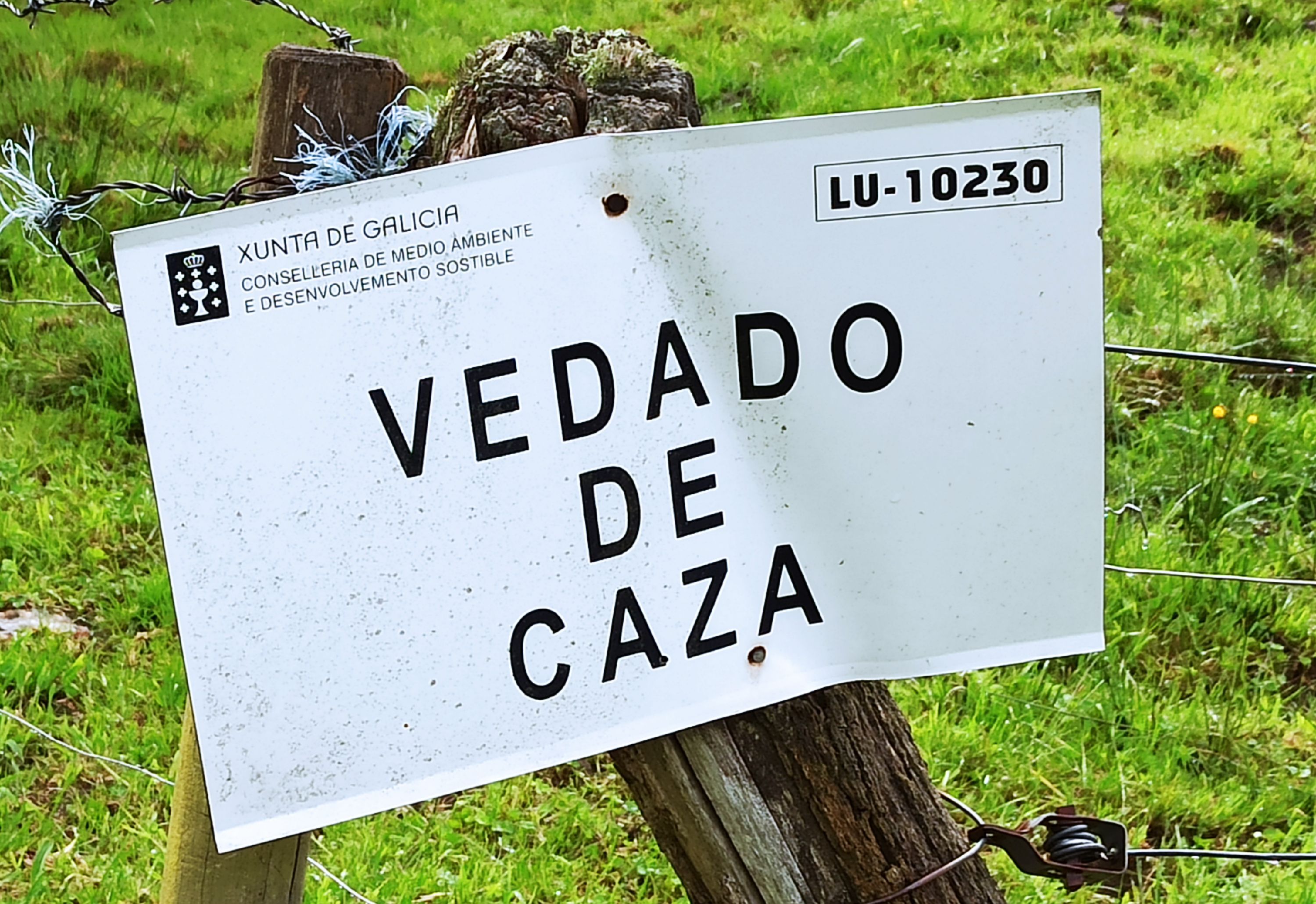
|
79936
|
|
Spain
Samos
|
|
|
—
|
|
|
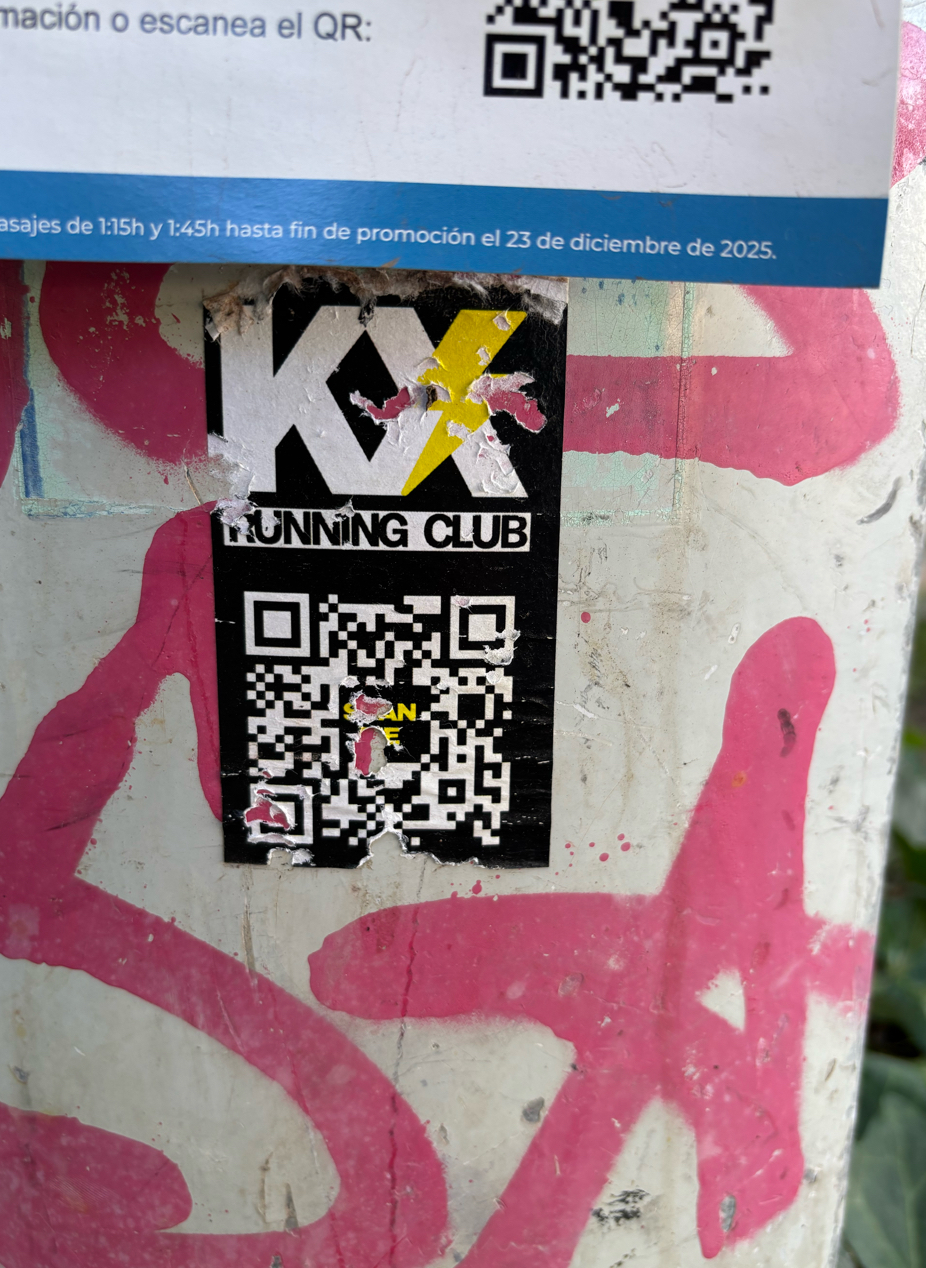
|
145984
|
Naomi_Heller
|
Spain
València
|
|
|
—
|
Valencia
|
|
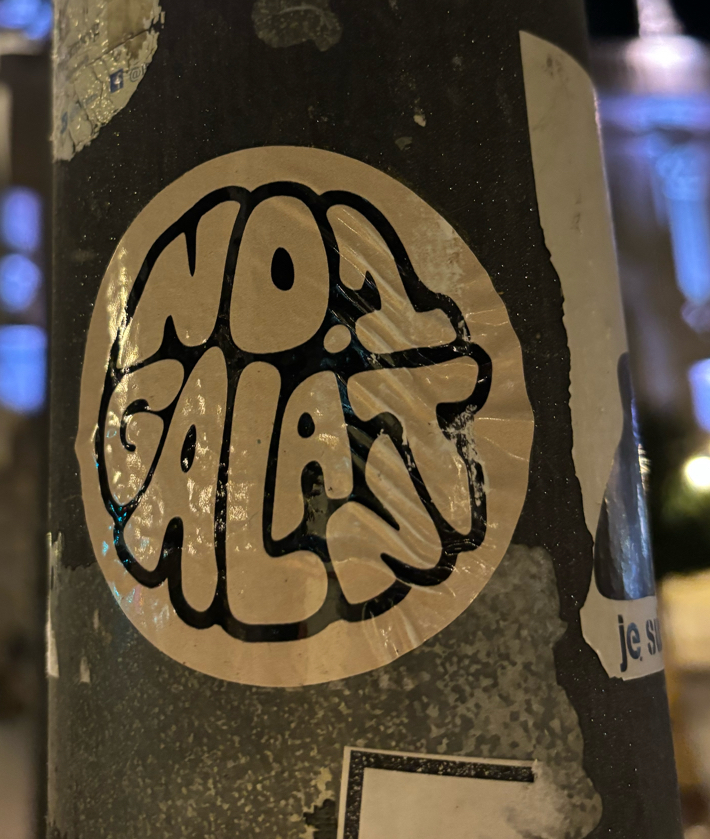
|
146240
|
Naomi_Heller
|
Spain
València
|
|
|
—
|
Valencia
|
|
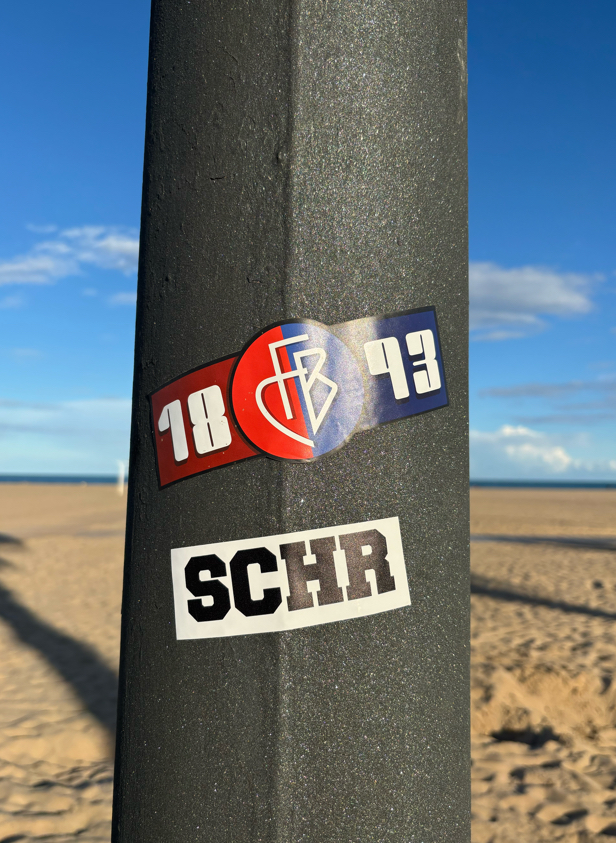
|
146496
|
Naomi_Heller
|
Spain
València
|
|
|
—
|
Valencia
|
|
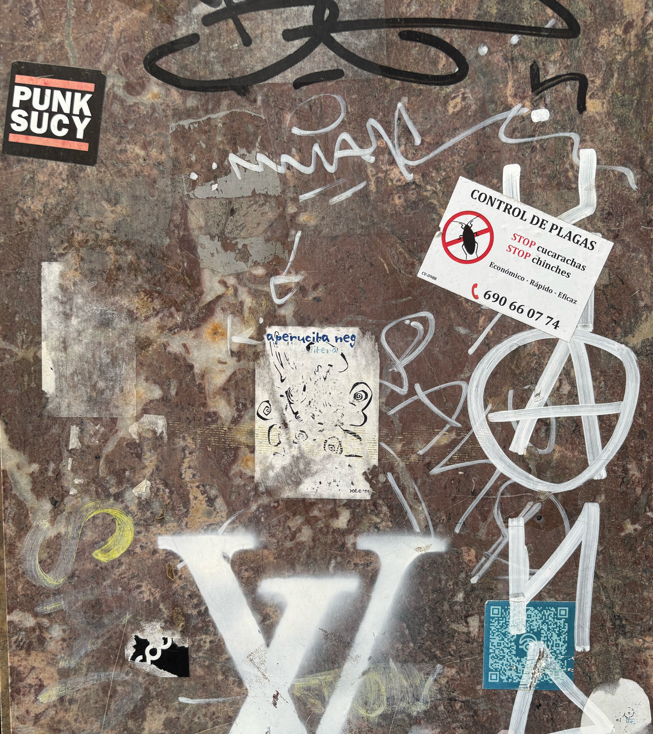
|
146752
|
Naomi_Heller
|
Spain
València
|
|
|
—
|
Valencia
|
|
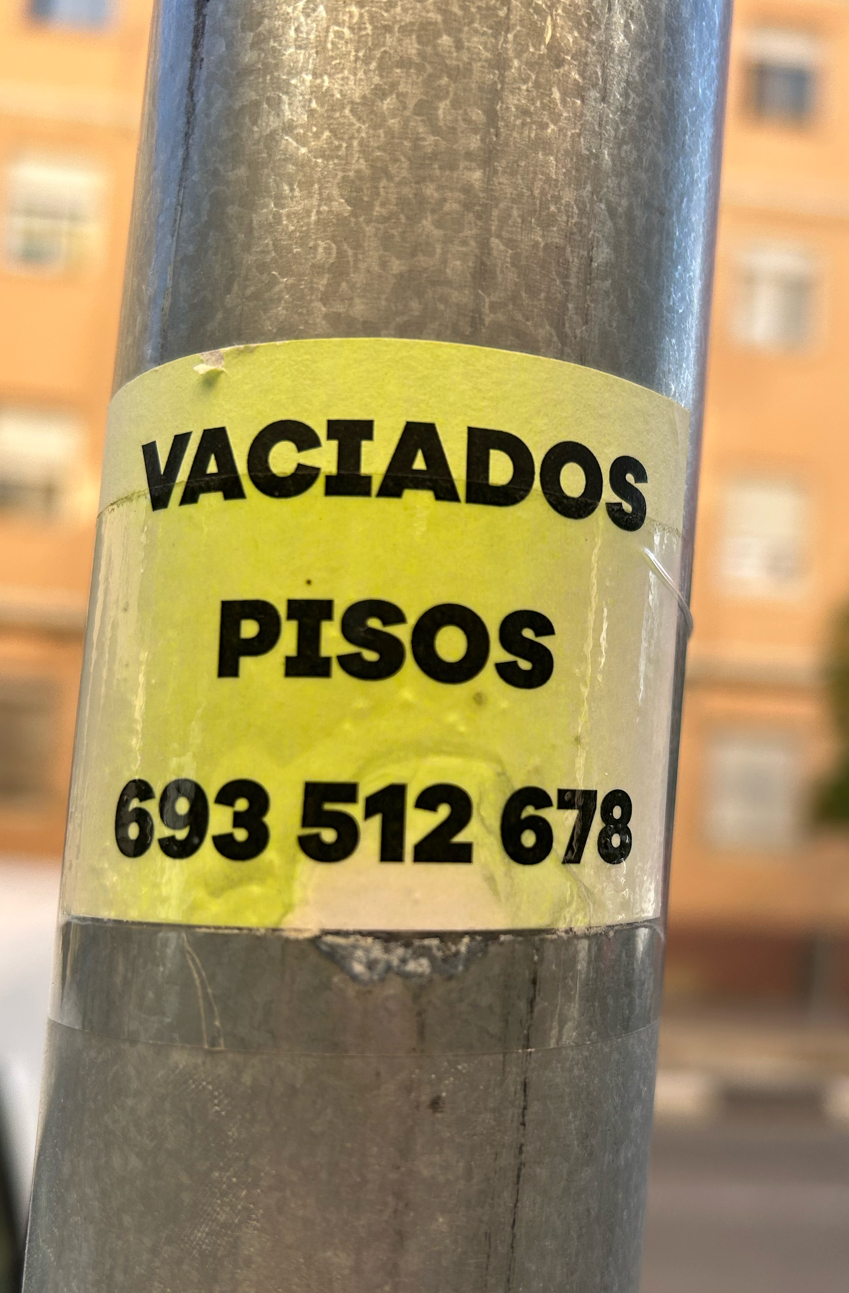
|
147264
|
alex_analyzing stickers_unibe
|
Spain
València
|
|
|
—
|
Valencia
|
|
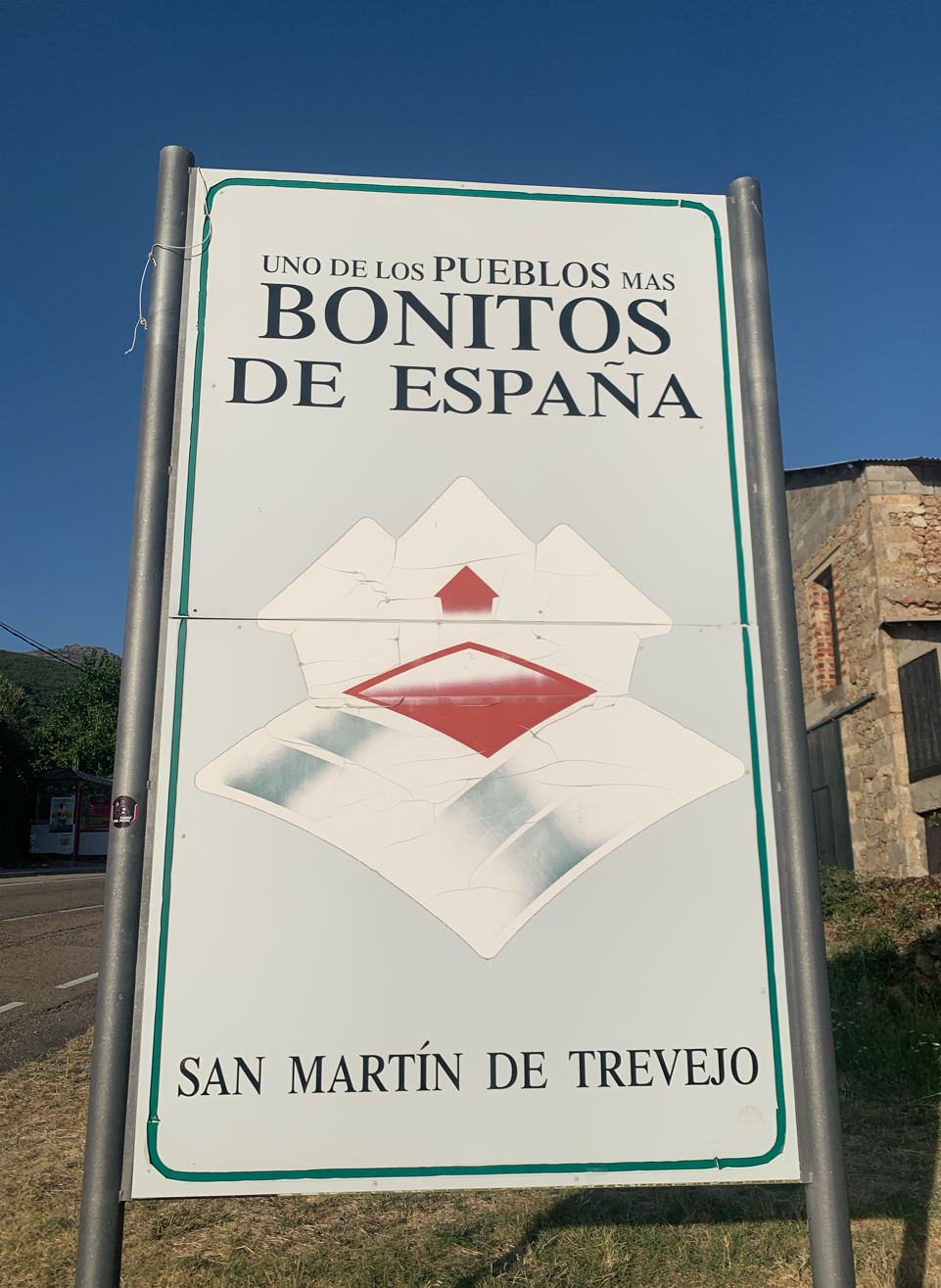
|
135745
|
Laura_Pizarro_Jacinto
|
Spain
San Martín de Trevejo
|
|
|
PALRA | Documenting Living Languages in Western Iberia
SM | San Martín de Trevejo Corpus ID : 004 - 155745
Semiotic Resources (TS) / Composition (LL) : symbol+text (logo of the association)
Translational Agency (TS) / Directedness (LL) : top-down (institutional / official tourism network)
Discursive Framing (TS) / Discourse (LL) : commercial+informative
Translation Strategy (TS) / Distribution (LL) : not applicable (monolingual inscription)
Visibility / Linguistic Hierarchy (TS) / Dominance (LL) : typeface + positioning + size(large central Spanish text dominates)
Mobility (TS) / Dynamics (LL) : fixed (fixed roadside sign)
Sign Type (TS) / Form (LL) : information sign
Textual Integrity (TS) / Integrity (LL) : complete (minor wear in logo)
Intertextuality (TS) / Layering (LL) : cultural
Multilingualism (TS) / Linguality (LL) : monolingual
Material (TS) / Material (LL) : metal panel
Inscription (TS) / Mode (LL) : printed
Agents (TS) / Name (LL) : authority / institution (national tourism association)
Placement (TS) / Placement (LL) : sign
Size (TS) / Size (LL) : 1–4 m² (large roadside sign)
Status (TS) / Status (LL) : authorised (officially installed and permitted)
Paratext (TS) / Supplement (LL) : none
Temporality (TS) / Temporality (LL) : permanent (intended long-term signage)
Language Constellation (TS) / Languages (LL) : SPA (Spanish)
Intersemiotic Elements (TS) / Non-Linguistic Semiotics (LL) : logo (red roof and mountains design)
Translation Mode (TS) / Translation Mode (LL) : intersemiotic (logo)
Translational Silencing (TS) / Absence Marker (LL) : Yes (Extremaduran absent)
Notes : This is an example of institutional monolingual signage: Spanish is the sole language used to represent local identity within a national tourism brand. Despite San Martín de Trevejo being an A Fala-speaking town, the local variety is silenced here, replaced by the hegemonic national language. The cracks in the sign also index material ageing, contrasting the permanence of its institutional authority with the fragility of its materiality.
|
PALRA
|
|
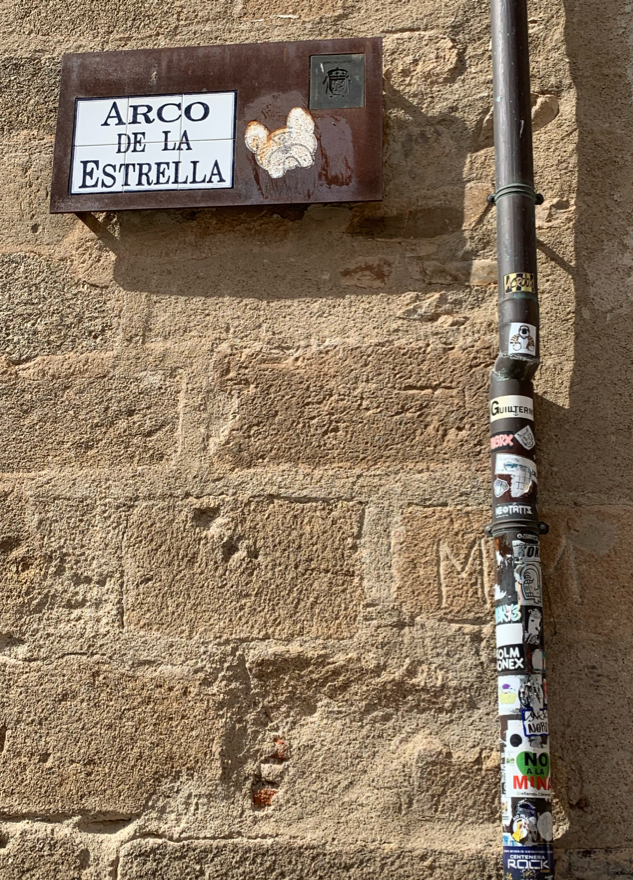
|
136001
|
Laura_Pizarro_Jacinto
|
Spain
Cáceres
|
|
|
Languages: Spanish (official place name Arco de la Estrella, stickers like No a la mina), English (stickers such as Rock), graffiti tags.
Additional elements: A dog sticker placed directly over the coat of arms symbol; stencil carvings scratched into the stone.
Individual/anonymous voices: Wall carvings, semiotic traces of past visitors, marking presence outside official narratives.
This is a palimpsest landscape. The official Spanish heritage sign represents institutional voice. Stickers in Spanish and English express activism and youth culture. The dog sticker disrupts the coat of arms, symbolically rebranding the heritage sign. Wall carvings represent long-term informal inscriptions, marking individual presence.
|
PALRA
|
|
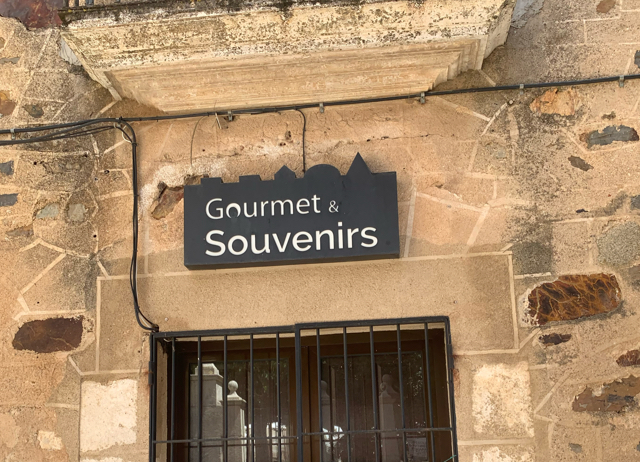
|
136257
|
Laura_Pizarro_Jacinto
|
Spain
Cáceres
|
|
|
The language in this sign is English.
Gourmet (English, borrowed from French)
Souvenirs (English, borrowed from French, meaning keepsakes or mementos)
So although the roots are French, here they are being used in English context for tourists. If it were written in standard Spanish, it would normally say: “Delicatessen y Recuerdos”. The sign is English-influenced, but fully understandable in Spanish too, since the loanwords are in everyday use.
|
PALRA
|
|
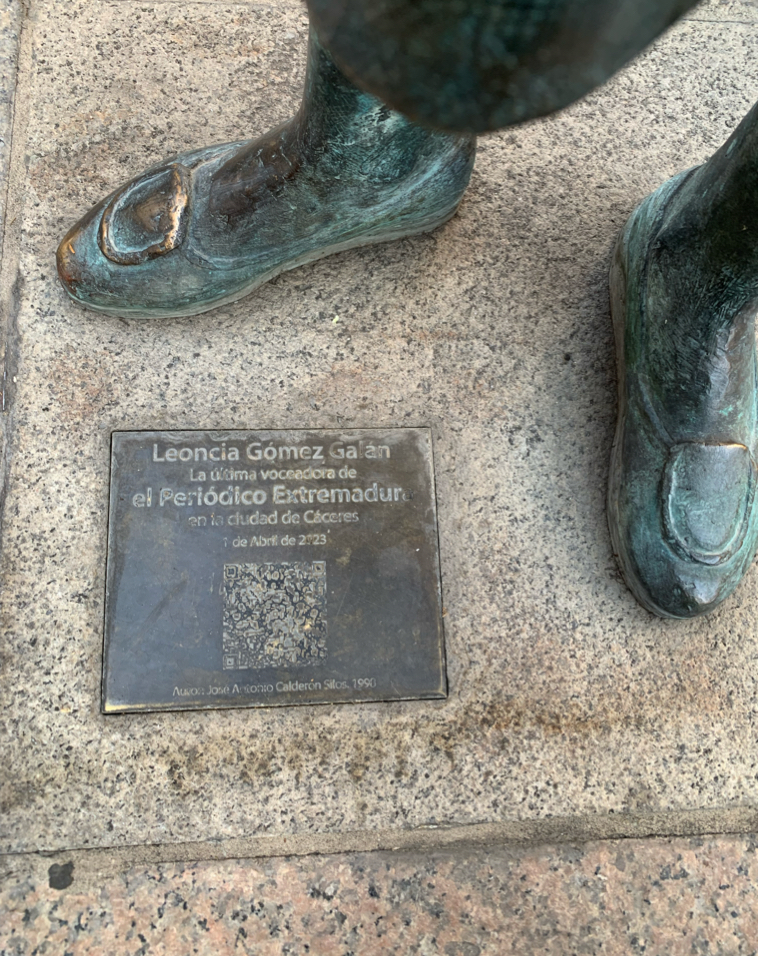
|
136513
|
Laura_Pizarro_Jacinto
|
Spain
Cáceres
|
|
|
—
|
PALRA
|
|
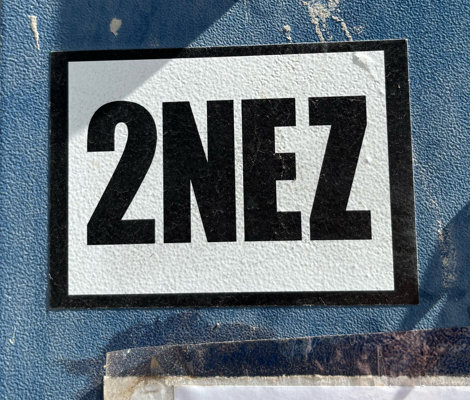
|
139329
|
Naomi_Heller
|
Spain
Valencia
|
|
|
—
|
Valencia
|
|
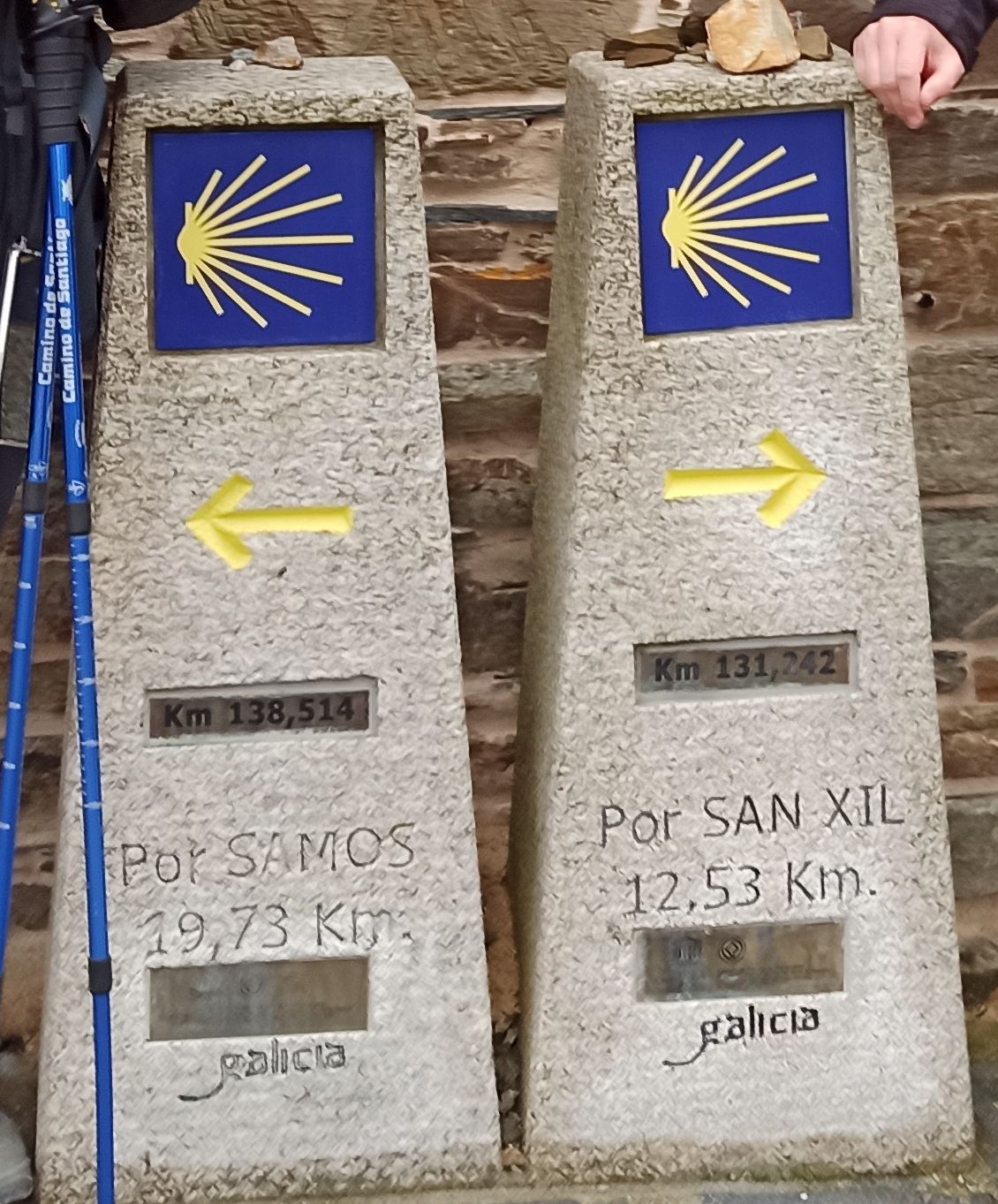
|
79937
|
|
Spain
Triacastela
|
|
|
—
|
|
|
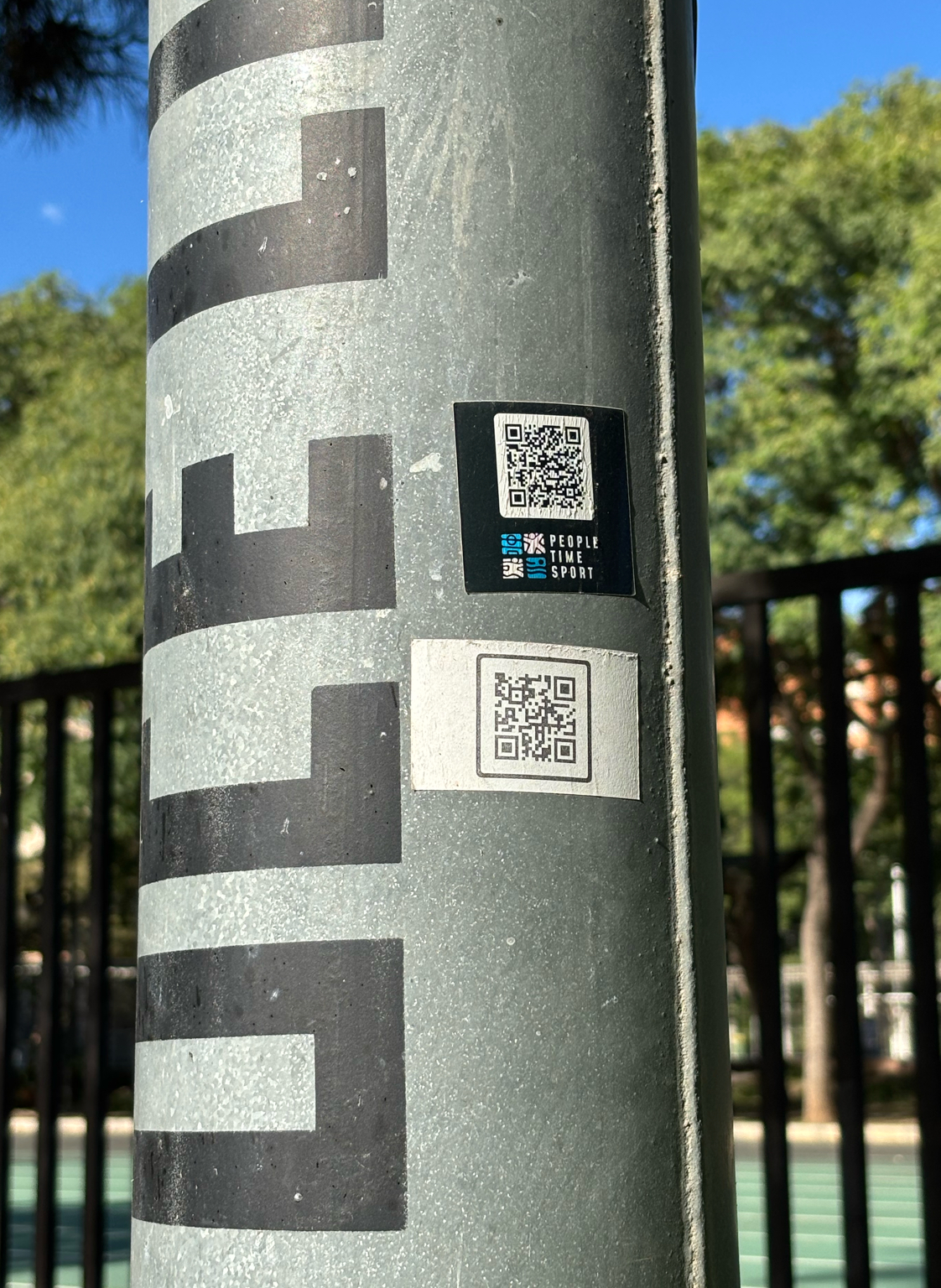
|
145985
|
Naomi_Heller
|
Spain
València
|
|
|
—
|
Valencia
|
|
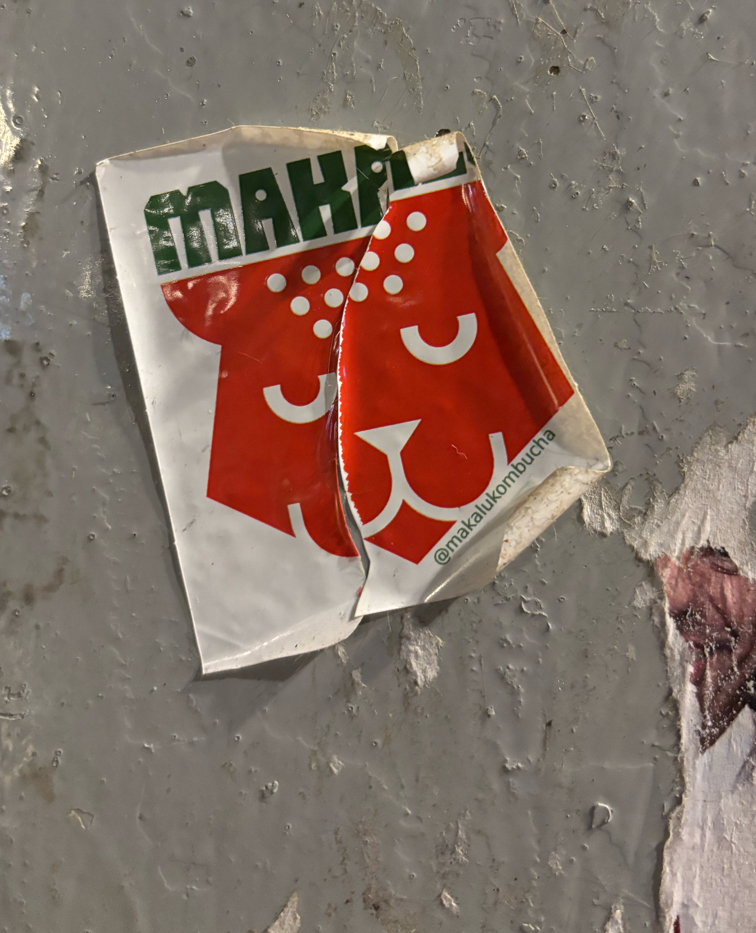
|
146241
|
Naomi_Heller
|
Spain
València
|
|
|
—
|
Valencia
|
|
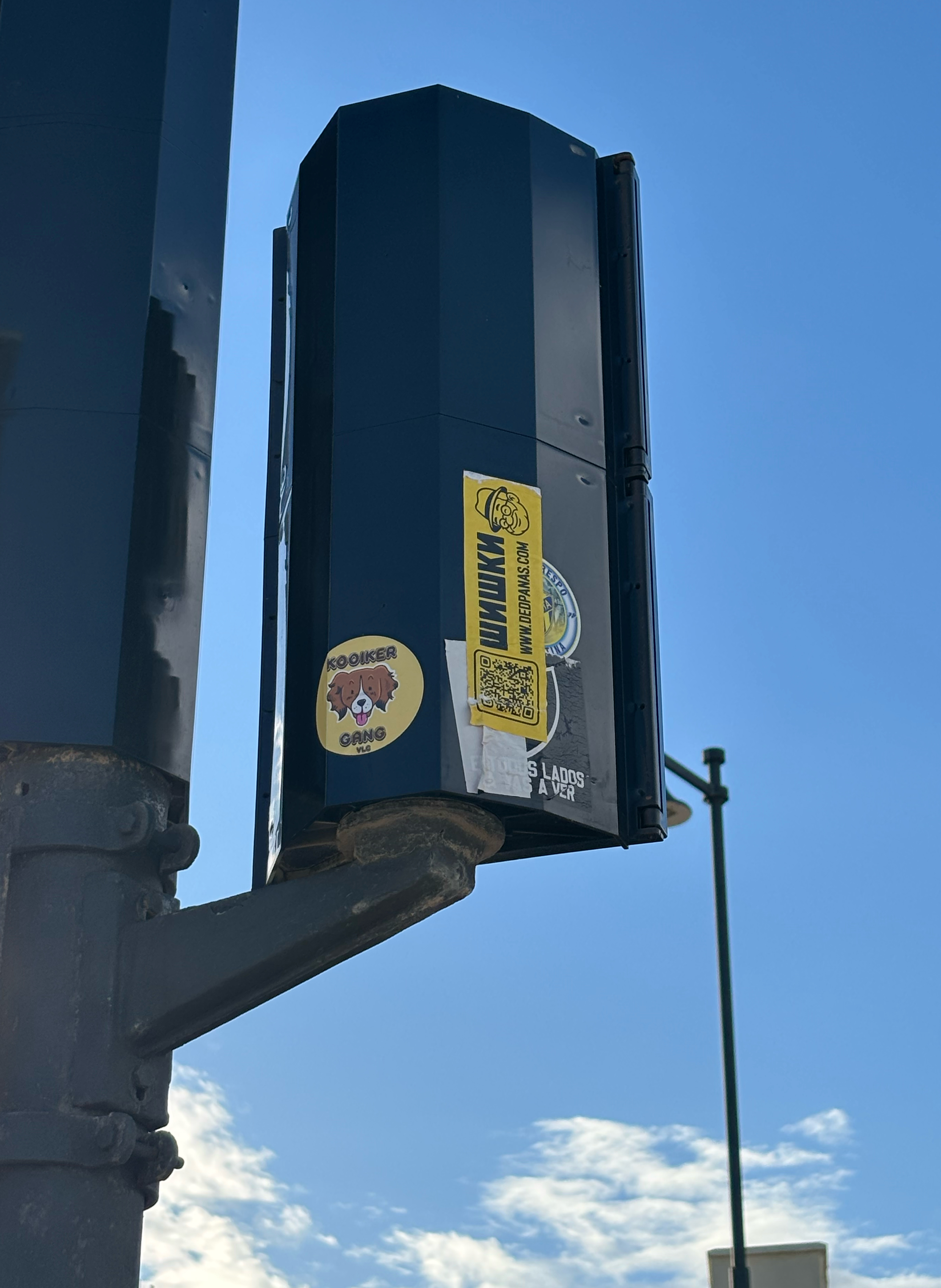
|
146497
|
Naomi_Heller
|
Spain
València
|
|
|
—
|
Valencia
|
|
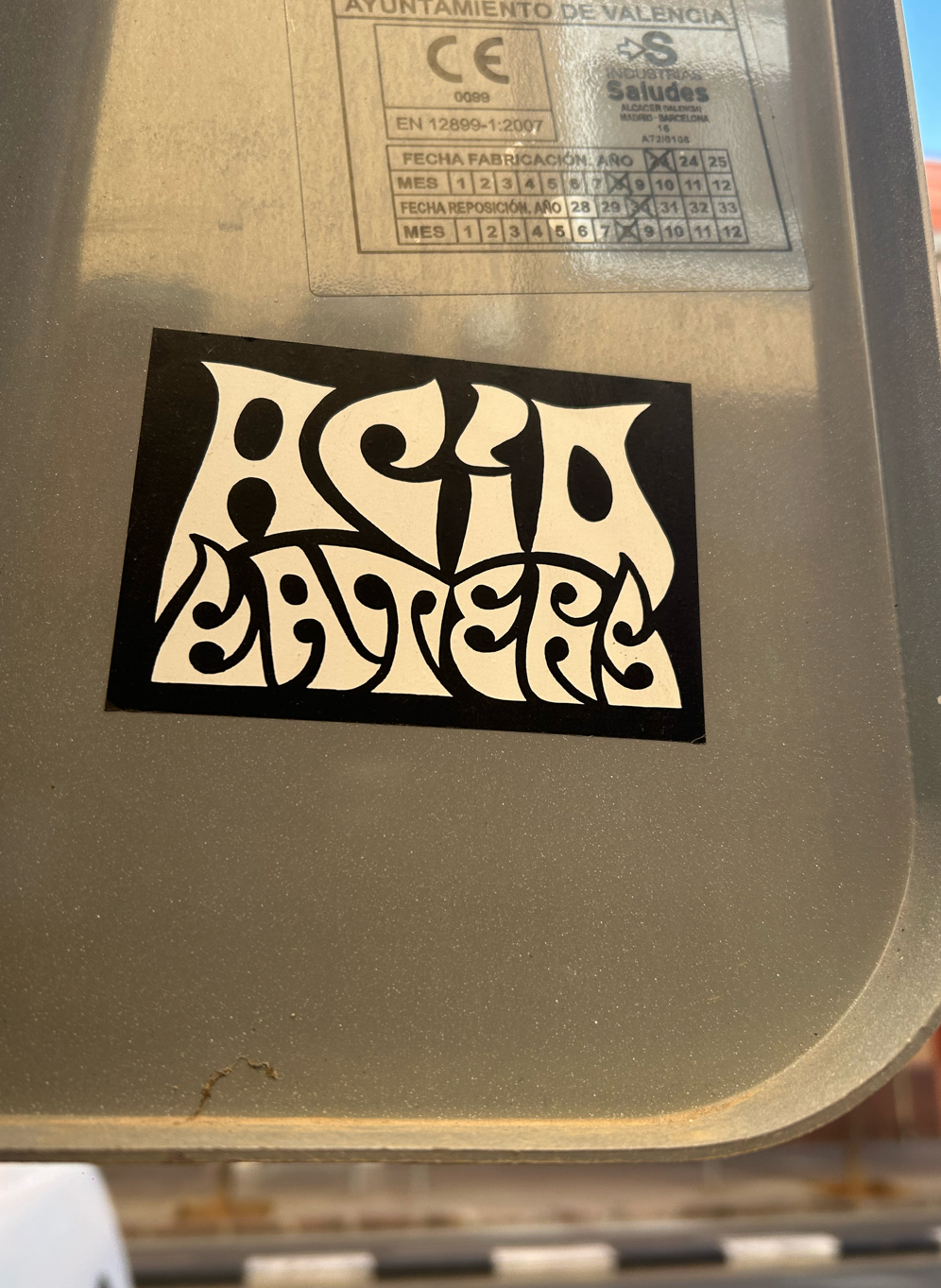
|
147265
|
alex_analyzing stickers_unibe
|
Spain
València
|
|
|
—
|
Valencia
|
|

|
129089
|
|
Spain
Zamora
|
|
|
—
|
|
|
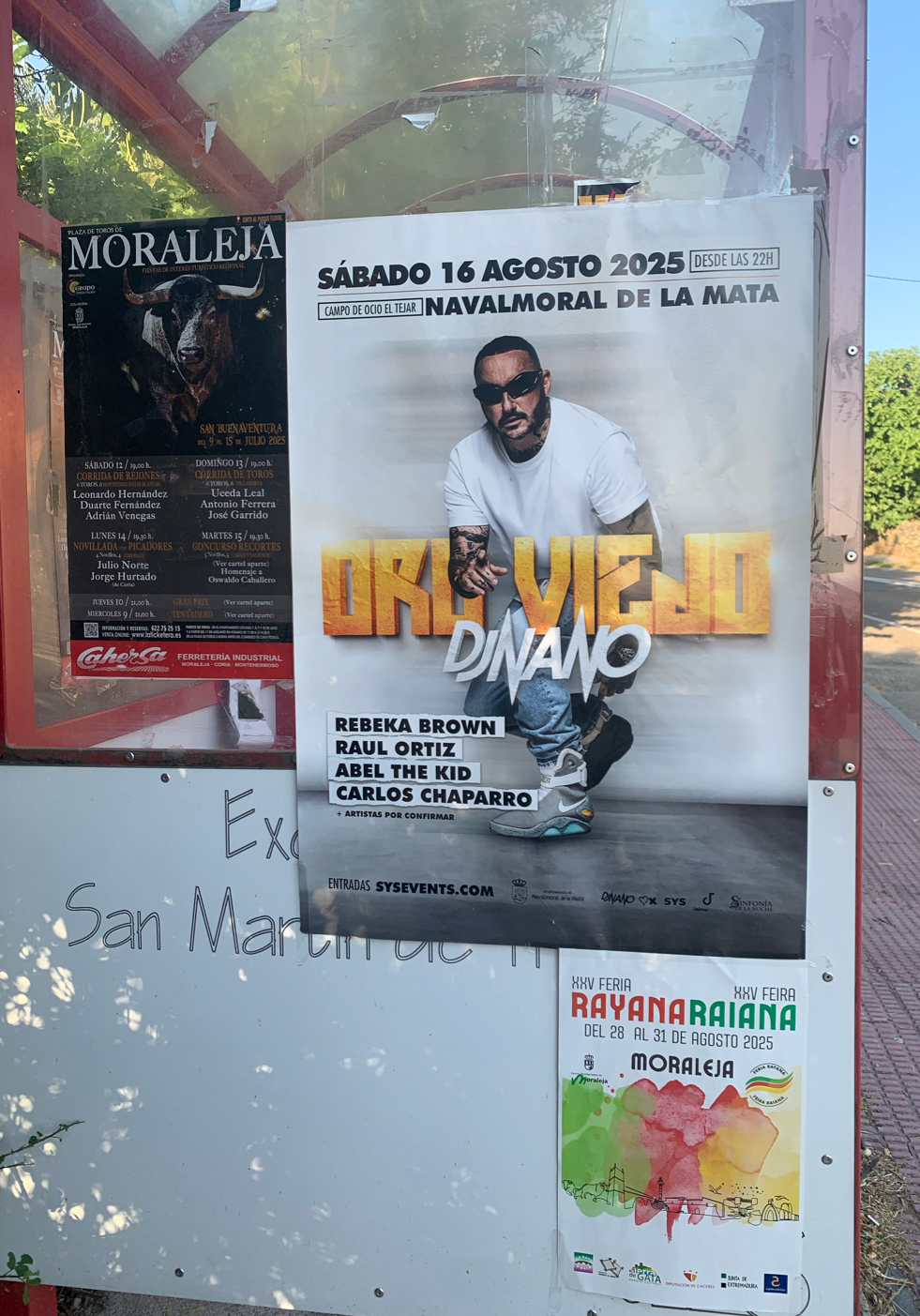
|
135746
|
Laura_Pizarro_Jacinto
|
Spain
San Martín de Trevejo
|
|
|
PALRA | Documenting Living Languages in Western Iberia
SM | San Martín de Trevejo Corpus ID : 005 - 155746
Semiotic Resources (TS) / Composition (LL) : image+text (photos of performers, bull, logos, symbols)
Translational Agency (TS) / Directedness (LL) : bottom-up (commercial & cultural promoters)
Discursive Framing (TS) / Discourse (LL) : commercial+ informatory (event-related)
Translation Strategy (TS) / Distribution (LL) : mixing
Visibility / Linguistic Hierarchy (TS) / Dominance (LL) :quantity+size+ typeface+colour (large, bold performer names dominate; background images secondary)
Mobility (TS) / Dynamics (LL) : fixed (affixed to panel/board)
Sign Type (TS) / Form (LL) : posters (concert + bullfighting + festival)
Textual Integrity (TS) / Integrity (LL) : superimposed (readable posters, not significantly damaged)
Intertextuality (TS) / Layering (LL) : material
Multilingualism (TS) / Linguality (LL) : bilingual
Material (TS) / Material (LL) : paper
Inscription (TS) / Mode (LL) : printed
Agents (TS) / Name (LL) : event- festival
Placement (TS) / Placement (LL) : public transport stop
Size (TS) / Size (LL) : A3–1 m² (main concert poster); smaller for side posters
Status (TS) / Status (LL) : recognised (transgressive or semi-authorised (community posters often pasted informally)
Paratext (TS) / Supplement (LL) : none
Temporality (TS) / Temporality (LL) : event-related (concerts, festivals, bullfighting dates)
Language Constellation (TS) / Languages (LL) : SPA (Spanish)+POR ( Portuguese)+ ENG ( English)
Intersemiotic Elements (TS) / Non-Linguistic Semiotics (LL) : images of bull, performer photo, coloured festival map
Translation Mode (TS) / Translation Mode (LL) : interlingual (3 languages)
Translational Silencing (TS) / Absence Marker (LL) : Yes Extremaduran
Notes : This cluster of posters highlights how public boards become contested semiotic spaces: overlapping inscriptions, competing for visibility. The commercial concert poster dominates visually, overshadowing smaller cultural and cross-border festival announcements. Despite being in San Martín de Trevejo (A Fala-speaking area, near Portugal), neither A Fala nor Portuguese are included, reinforcing the dominance of Spanish in event promotion.
Additional Info:
Poster 1 (left, black – “MORALEJA”)
Language: Spanish (Castilian)
Content: bullfighting schedule ("corrida de reses bravas", "novillada", "picadores") with names of toreros.
Poster 2 (center – “Oro Viejo by DJ Nano”)
Languages: Spanish and English
"SÁBADO 16 AGOSTO 2025 DESDE LAS 22H" : Saturday, 16 August 2025, from 22h. (Spanish)
Artists’ names appear in English/Spanish mix: e.g., "Rebeka Brown", "Raul Ortiz", "Abel The Kid", "Carlos Chaparro".
Website: "sysevents.com" (English format).
A mix of Spanish (date, time, location) and English (branding, event promotion), common in music and nightlife advertising in Spain.
Poster 3 (bottom right – Feria Rayana)
Languages: Spanish and Portuguese
Spanish: "DEL 28 AL 31 DE AGOSTO 2025, MORALEJA"
Portuguese: "FEIRA RAIANA" (fair between Spain and Portugal, "raiana" means “borderland”).
|
PALRA
|
|
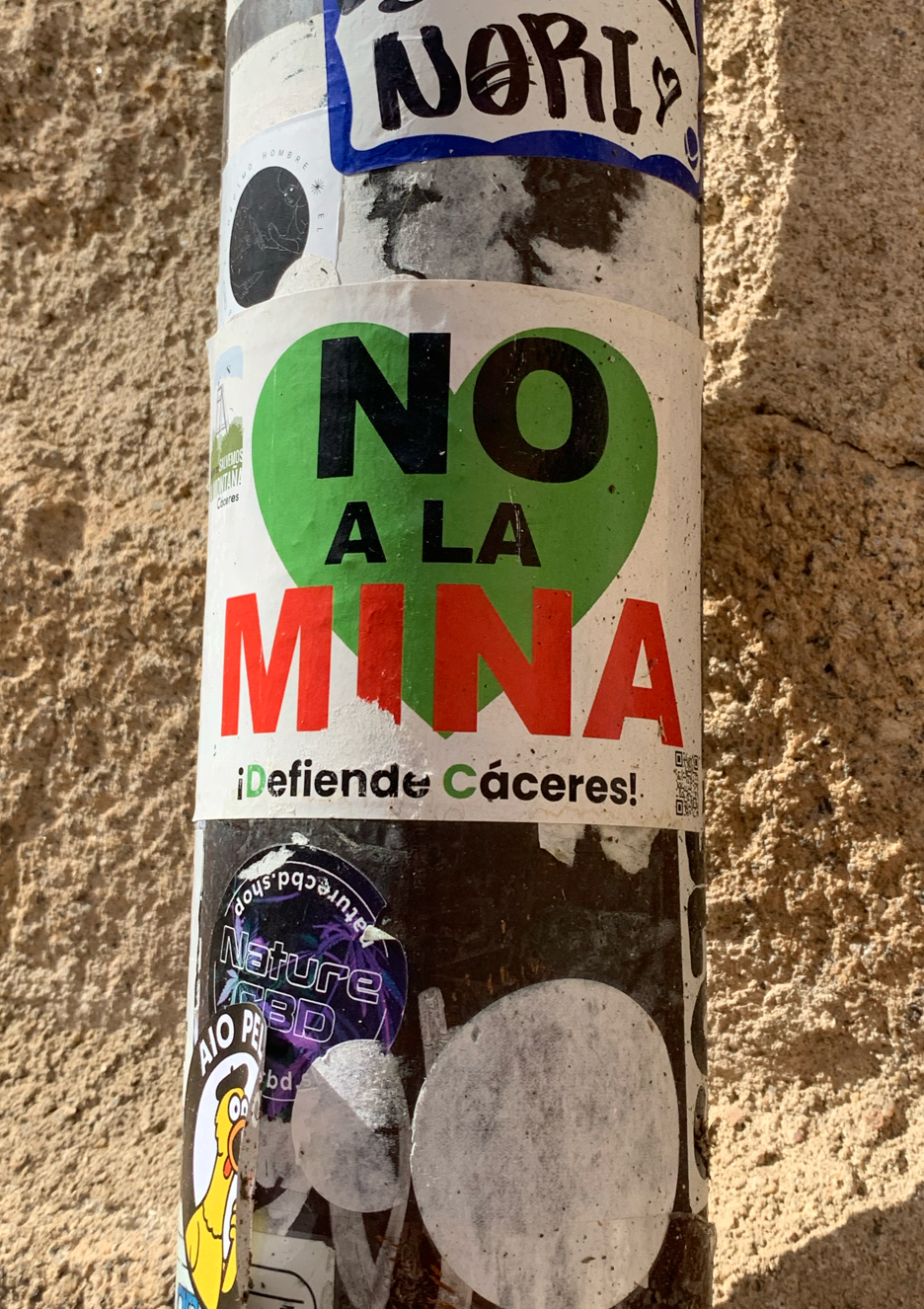
|
136002
|
Laura_Pizarro_Jacinto
|
Spain
Cáceres
|
|
|
A prominently placed sticker reads “NO A LA MINA” in bold typography, followed by “¡Defiende Cáceres!” (Defend Cáceres!), over a green heart shape. Other smaller stickers around it include expressive tags and images, layering socio-political messaging onto public infrastructure.
This sticker is part of broader civic action:
Local activism: Organized by citizens under “Plataforma Salvemos la Montaña”, a group opposing the lithium mining project near the Sierra de la Mosca, a protected ecological area and symbol of local heritage.
Mass mobilization: Two major protests were held in 2024, with attendance reaching up to 7,000 people, carrying slogans like “Defiende Cáceres” and “No a la mina” on banners throughout the city.
Transparency concerns: Activists have accused regional authorities of withholding unfavorable environmental reports, raising frustration and rallying calls like those on the sticker.
|
PALRA
|
|